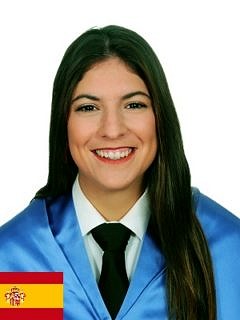Marta Carrasco
Marta Carrasco
Gaststudentin, Universidad Francisco de Vitoria, Madrid, Spain
Essential oil incorporated polycaprolactone-based electrospun nanofibers for antibacterial wound healing
Betreuer: Irem Unalan, Prof. Aldo R. Boccaccini
Bacterial infection in wound healing is a critical health concern [1]. In recent years, the use of natural antibiotic-free agents such as phytotherapeutics has been of renewed interest to suppress bacterial infection, including work in the Erlangen Institute of Biomaterials [2,3]. This project aims to overcome the contamination problem in the wound healing process by investigating natural phototherapeutic agents. For this propose, essential oil (EO) incorporated- polycaprolactone based electrospun nanofibers will be fabricated and characterized. Physico-mechanical behavior, antibacterial activity and biocompatibility will be investigated in detail as function of EO content.
[1] S. Homaeigohar, A.R. Boccaccini, Antibacterial biohybrid nanofibers for wound dressings, Acta Biomaterialia 107 (2020) 25-49.
[2] I. Unalan, et al., Evaluation of electrospun poly(ε-caprolactone)/gelatin nanofiber mats containing clove essential oil for antibacterial wound dressing, Pharmaceutics 11 (2019) 570.
[3] I. Unalan, et al., Physical and Antibacterial Properties of Peppermint Essential Oil Loaded Poly(ε-caprolactone) (PCL) Electrospun Fiber Mats for Wound Healing, Front Bioeng Biotechnol. 7 (2019) 346.

